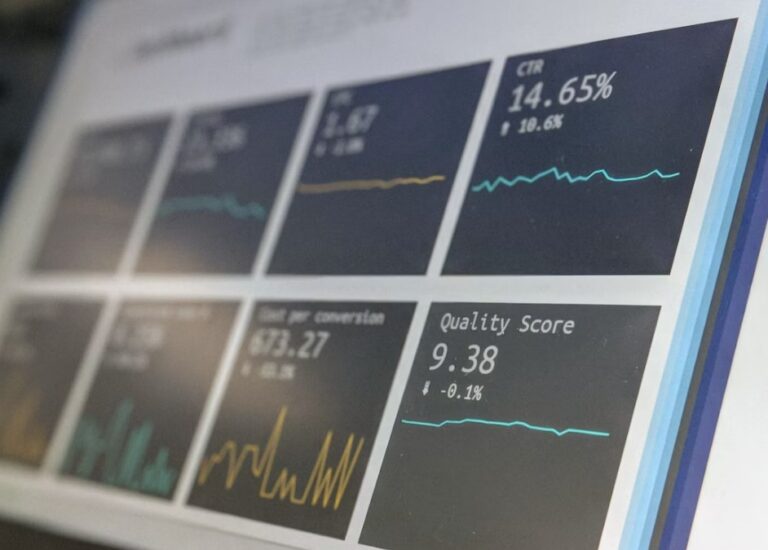An exchange-traded fund, commonly called an ETF, is a variety of pooled investment assets sharing operational similarities with a mutual fund. Typically, ETFs maintain their focus on specific indexes, sectors, commodities, or other assets. The distinctive feature, however, lies in their tradeability.
Contrasting with mutual funds, ETFs can be bought or sold on a stock exchange just as you would with a conventional stock. The versatility of an ETF allows it to be structured for tracking anything – right from the cost of a solitary commodity to a large, diverse assortment of securities. It doesn’t stop there; ETFs can also be tailored to follow particular investment strategies.
The first ETF was the SPDR S&P 500 ETF (SPY), designed to track the S&P 500 Index. To this day, it continues to be actively traded, cementing its place in the world of ETFs.
Table of Contents
Types of ETFs (Exchange Traded Funds)
The following are some ETFs available on the market today:
Passive and active ETFs
ETFs fall into two primary categories: passive and active. Passive ETFs aim to mirror the performance of a broader index, e.g., the S&P 500, or a more targeted sector or trend, such as gold mining stocks. On the other hand, active ETFs have portfolio managers who make the call on which securities to include in the portfolio. While active ETFs may offer certain benefits over their passive counterparts, they tend to be pricier for investors.
Bond ETFs
Bond ETFs cater to investors seeking regular income. Their income distribution relies on the performance of underlying bonds, which could include government, corporate, or municipal bonds. Notably, bond ETFs do not have a maturity date, unlike their underlying instruments, and can trade at a discount or premium from the original bond price.
Stock ETFs
Stock or equity ETFs bundle a variety of stocks to track a single industry or sector. The goal is to offer diversified exposure to an industry, encompassing both high performers and promising new entrants. They have the edge over stock mutual funds with their lower fees and lack of actual ownership of securities.
Industry/Sector ETFs
These ETFs zoom in on a specific sector or industry. An energy sector ETF, for example, will include companies operating within that realm. The intent is to capture the industry’s upside by tracking the performance of the involved companies.
What to look for in ETFs (Exchange Traded Funds)
Once you’ve set up and funded your brokerage account, you can start trading ETFs just like stocks. With a vast array of ETFs available, using an ETF screening tool can be a helpful way to narrow down your options. Many brokers offer these tools to help sift through the myriad of ETF offerings. Here are some key criteria to consider when selecting an ETF:
Volume
Trading volume over a specific period can help gauge the popularity of different funds. Generally, a higher trading volume means the fund can be traded more easily.
Expenses
An essential factor to consider is the expense ratio. A lower ratio means fewer of your funds go toward administrative costs. It’s tempting to always opt for funds with the lowest expense ratios, but sometimes pricier funds, like actively managed ETFs, offer strong performance that justifies the higher fees.
Performance
While past performance isn’t a guarantee of future returns, it’s a commonly used metric for comparing ETFs. It provides insights into how the ETF has performed over time.
Commissions
Many ETFs are commission-free, meaning you can trade without any associated fees. However, it’s crucial to check this, as any commission costs could potentially impact your investment returns.
Advantages and disadvantages of ETFs
ETFs offer numerous benefits, but as with any investment, they come with their share of drawbacks too. Understanding both aspects can guide you in making informed investment decisions.
Advantages of ETFs
Diversification
ETFs can provide broad diversification as they often contain a range of different assets. Whether it’s stocks, bonds, or commodities, investing in an ETF gives you exposure to a whole sector or market, reducing your risk compared to investing in individual assets.
Liquidity
Exchange Traded Funds can be bought and sold throughout the trading day at market price, much like individual stocks. This gives you the flexibility to act quickly on market trends and offers greater control over when and at what price you buy or sell.
Lower Costs
In comparison to many mutual funds, ETFs generally have lower expense ratios, making them a cost-effective investment choice. Also, many ETFs are index funds (passively managed), meaning they aim to replicate the performance of a specific index, which can further reduce management costs.
Disadvantages of ETFs
Trading costs
While the expense ratios might be lower, frequent trading of ETFs can incur brokerage commissions, which can add up over time, especially for those who trade frequently.
Limited returns
While diversification reduces risk, it may also limit potential returns. For example, if an ETF holds a broad array of stocks and only a few perform exceptionally well, the impact on the overall ETF return might be minimal.
Potential for price discrepancies
Despite their design to mimic specific assets or indexes, ETFs may not always deliver a perfect match. There could be moments when the ETF’s price strays from the net asset value of its base assets, particularly in unsettled market scenarios. Such variations might lead investors to trade ETFs at prices that veer from their real value.
Exchange-Traded Funds (ETFs) have revolutionized the investment landscape
ETFs present an easy entry point to a vast spectrum of asset classes. Their adaptability, cost-efficiency, and promise of instant diversification set them apart as an attractive investment choice for both seasoned market players and beginners.
Yet, they carry their own set of complexities, such as potential trading charges and occasional divergence between the ETF’s price and the net asset value of its base assets.
Embarking on the ETF journey might appear overwhelming, but with a comprehensive grasp of their advantages and possible hurdles, you’re better positioned to make well-informed investment decisions.
Bear in mind investing is less about pursuing immediate gains and more about developing a robust, long-term strategy that can weather market swings. Seek expert advice when in doubt, and remember to invest within your financial capabilities and risk appetite.
Read also: The best apps for investing online from your smartphone












